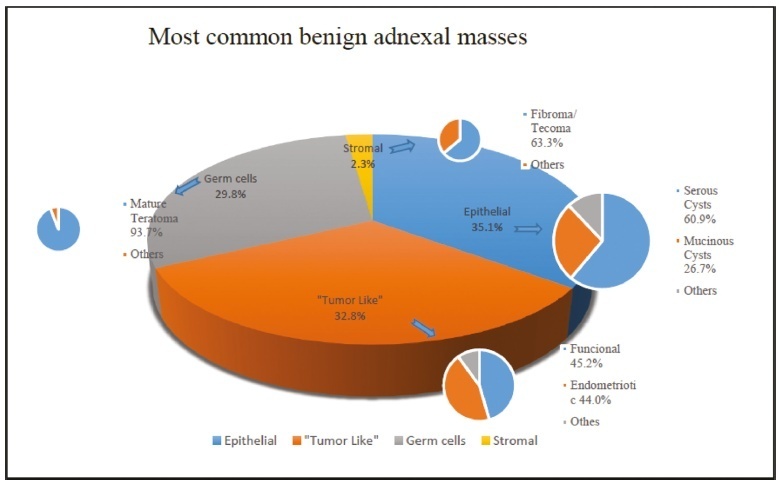Summary
Revista Brasileira de Ginecologia e Obstetrícia. 2020;42(12):834-840
Thrombocytopenia, defined as platelet count < 150,000mm3, is frequently diagnosed by obstetricians since this parameter is included in routine surveillance during pregnancy, with an incidence of between 7 and 12%. Therefore, decisions regarding subsequent examination and management are primordial. While most of the cases are due to physiological changes, as gestational thrombocytopenia, other causes can be related to severe conditions that can lead to fetal or maternal death. Differentiating these conditions might be challenging: they can be pregnancy-specific (pre-eclampsia/ HELLP syndrome [hemolysis, elevated liver enzymes, low platelets]), or not (immune thrombocytopenia purpura, thrombotic thrombocytopenic purpura or hemolytic uremic syndrome). Understanding the mechanisms and recognition of symptoms and signs is essential to decide an adequate line of investigation. The severity of thrombocytopenia, its etiology and gestational age dictates different treatment regimens.
Summary
Revista Brasileira de Ginecologia e Obstetrícia. 2020;42(12):829-833
Thyroid diseases are relatively common in women in the reproductive period. It is currently understood that clinically-evident thyroid disorders may impair ovulation and, consequently, fertility. However, to date it has not been proven that high serum levels of thyroid-stimulating hormone and/or positivity for antithyroid antibodies are associated to a reduction in fertility, mainly in the absence of altered thyroxine levels. The present comprehensive review aims to present current data on the association between subclinical hypothyroidism and/or thyroid autoimmunity and reproductive outcomes.
Summary
Revista Brasileira de Ginecologia e Obstetrícia. 2020;42(11):759-768
To analyze the long-term effects of antineoplastic treatments on patient fertility.
The studies were selected through the New PubMed, Scielo and Lilacs databases along with references used for the creation of the present work. For the selection of studies, articles published between the periods from January 1, 2015 to April 6, 2020 in the English, Portuguese and Spanish languages were used. As inclusion criteria: cohort studies and studies conducted in vitro. As exclusion criteria: review articles, reported cases, studies that do not address thematic reproduction, studies that do not address the cancer theme, articles that used animals, articles that address the preservation of fertility and articles in duplicate in the bases.
The collected data included: age of the patient at the beginning of treatment, type of neoplasm, type of antineoplastic treatment, chemotherapy used, radiotherapy dosage, radiotherapy site, effect of antineoplastic agents on fertility and number of patients in the study.
Thirty studies were evaluated, antineoplastic chemotherapy agents and radiotherapy modulate serum hormone levels, reduces germ cell quantities and correlated with an increase in sterility rates. The effects mentioned occur in patients in the prepubertal and postpubertal age.
Antineoplastic treatments have cytotoxic effects on the germ cells leading to hormonal modulation, and pubertal status does not interfere with the cytotoxic action of therapies.

Summary
Revista Brasileira de Ginecologia e Obstetrícia. 2020;42(11):752-758
To identify whether the effects of thyroid disease during pregnancy and lactation affect the nutritional composition of human milk.
Systematic review of the scientific literature using the Medical Literature Analysis and Retrieval System Online/MedLine databases to evaluate the association of thyroid diseases during pregnancy and lactation with the nutritional composition of human milk. There was no delimitation by period or by language, and the searches were completed in March 2019. The following descriptors were applied: human milk AND thyroid AND composition, using the preferred reporting items for systematic reviews and meta-analyses (PRISMA) protocol for data search, selection, and extraction. The flowchart proposed for bibliographic search resulted in 12 articles and, of these, four were selected.
The articles elected for this review were published between 1976 and 2018. Two studies found significant differences in the nutritional composition of mothers' milk with hypothyroidism or overweight compared with the milk of those without hypothyroidism. Studies have shown that the presence of the disease led to changes in the nutritional composition of human milk, especially a higher concentration of human milk fat.
It is extremely important that these women have continuous nutritional follow-up to minimize the impact of these morbidities on the nutritional composition of human milk.
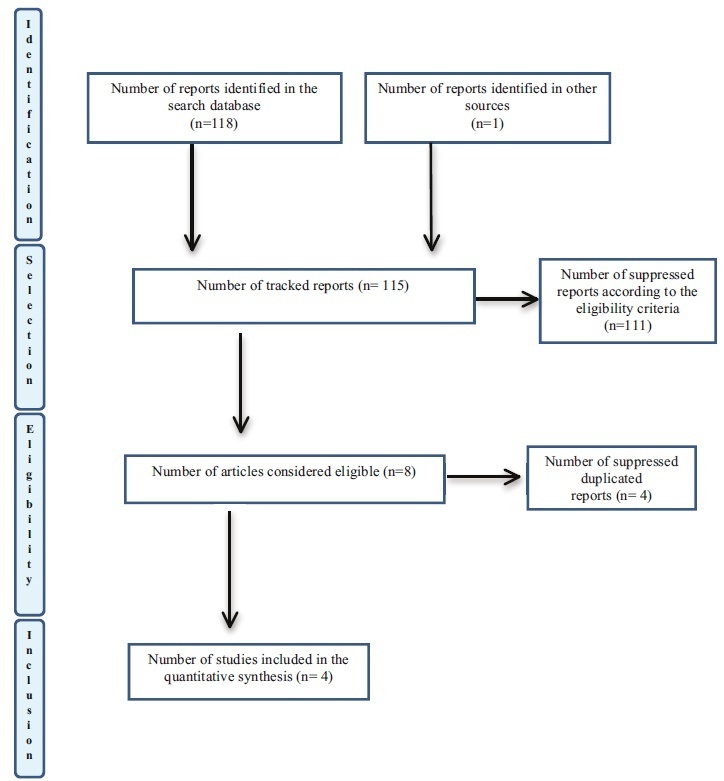
Summary
Revista Brasileira de Ginecologia e Obstetrícia. 2020;42(10):649-658
Gonadotropin-releasing hormone analogues (GnRH-a) have been used preoperatively before hysteroscopic myomectomy to decrease the size and vascularization of the myomas, but evidence to support this practice is weak. Our objective was to analyze the use of GnRH-a in the reduction of submucous fibroid as a facilitator for surgical hysteroscopy from published clinical trials.
Studies from electronic databases (Pubmed, Scielo, EMBASE, Scopus, PROSPERO), published between 1980 and December 2018. The keywords used were fibroid, GnRH analogue, submucous, histeroscopy, histeroscopic resection and their correspondents in Portuguese.
The inclusion criteria were controlled trials that evaluated the GnRH-a treatment before hysteroscopic resection of submucous myomas. Four clinical trials were included in the meta-analysis.
Two review authors extracted the data without modification of the original data, using the agreed form. We resolved discrepancies through discussion or, if required, we consulted a third person.
The present meta-analysis included a total of 213 women and showed no statistically significant differences in the use of GnRH-a compared with the control group for complete resection of submucous myoma (relative risk [RR]: 0.94; 95%; confidence interval [CI]: 0.80-1.11); operative time (mean difference [MD]: - 3.81; 95%;CI : - 3.81-2.13); fluid absorption (MD: - 65.90; 95%;CI: - 9.75-2.13); or complications (RR 0.92; 95%;CI: 0.18-4.82).
The present review did not support the routine preoperative use of GnRH-a prior to hysteroscopic myomectomy. However, it is not possible to determine its inferiority when compared with the other methods due to the heterogeneity of existing studies and the small sample size.
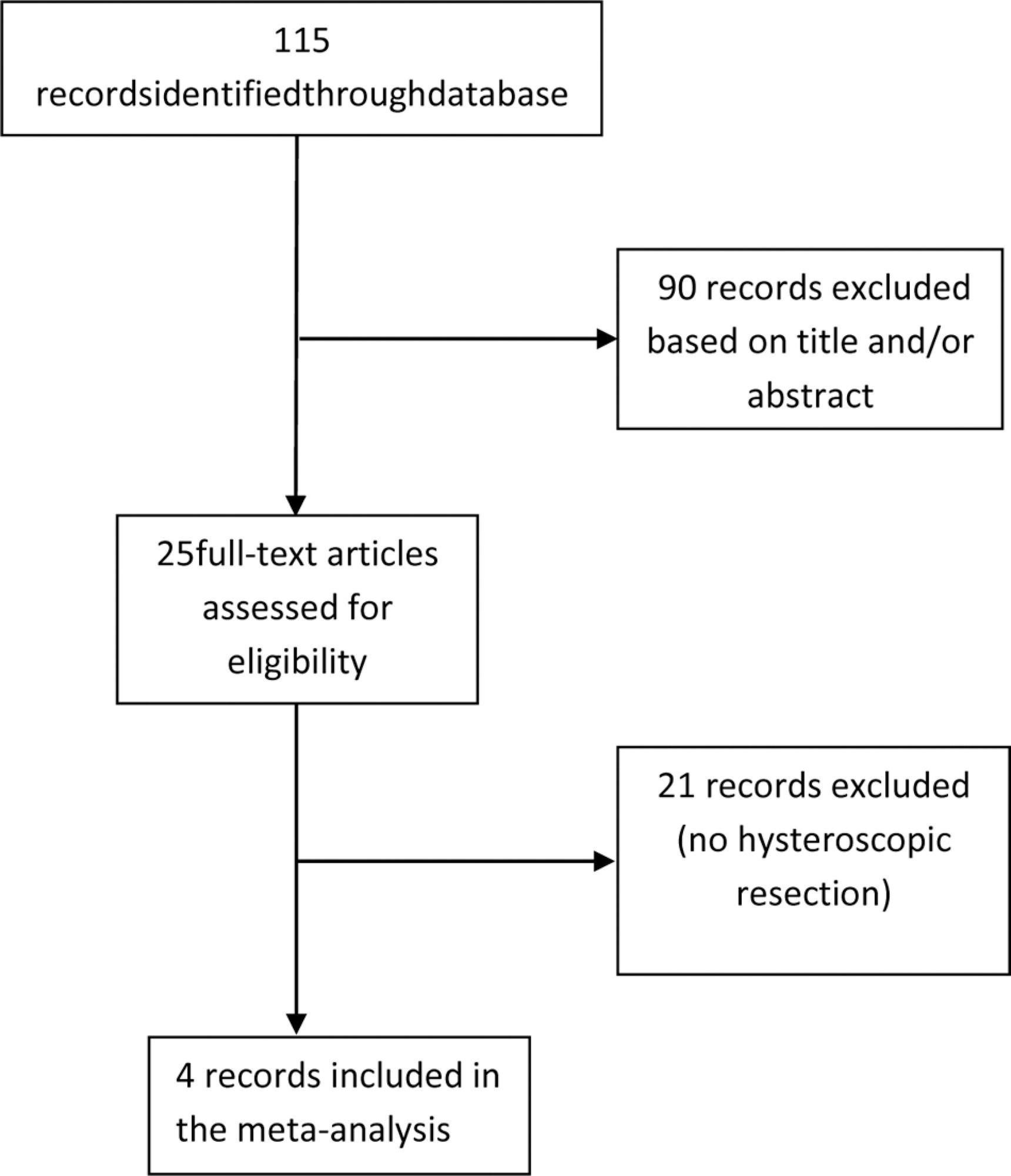
Summary
Revista Brasileira de Ginecologia e Obstetrícia. 2020;42(10):659-668
To identify the most effective procedures recommended for the prevention of preeclampsia.
A systematic review was performed in the following databases: Pubmed/MEDLINE, CINAHL, Web of Science, Cochrane and LILACS via the Virtual Health Library (VHL). A manual search was also performed to find additional references. The risk of bias, the quality of the evidence, and the classification of the strength of the recommendations were evaluated using the Grading of Recommendations, Assessment, Development and Evaluations (GRADE) approach.
In the initial search in the databases, the total number of articles retrieved was 351, and 2 were retrieved through the manual search; after duplicate articles were removed, 333 citations remained. After a thorough review of the titles and abstracts, 315 references were excluded. Accordingly, 18 articles were maintained for selection of the complete text (phase 2). This process led to the exclusion of 6 studies. In total, 12 articles were selected for data extraction and qualitative synthesis.
The articles selected for the study were analyzed, and we inserted the synthesis of the evidence in the online software GRADEpro Guideline Development Tool (GDT) (McMaster University and Evidence Prime Inc. All right reserved. McMaster University, Hamilton, Ontário, Canada); thus, it was possible to develop a table of evidence, with the quality of the evidence and the classification of the strength of the recommendations.
In total, seven studies recommended the individual use of aspirin, or aspirin combined with calcium, heparin or dipyridamole. The use of calcium alone or in combination with phytonutrients was also highlighted. All of the studies were with women at a high risk of developing preeclampsia.
According to the studies evaluated, the administration of aspirin is still the best procedure to be used in the clinical practice to prevent preeclampsia.
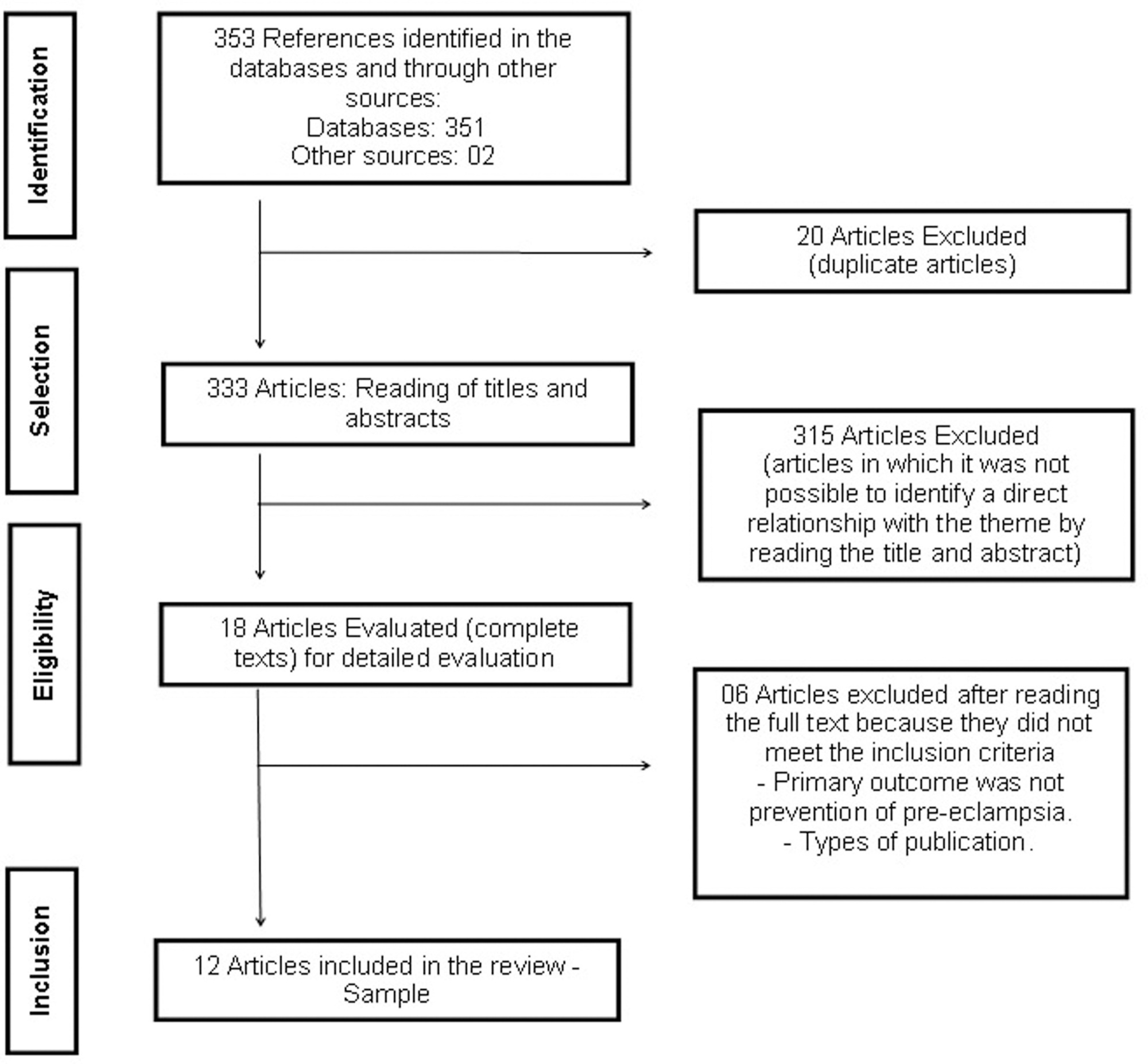
Summary
Revista Brasileira de Ginecologia e Obstetrícia. 2020;42(9):577-585
The aim of the current review is to present a systematic evaluation of reported human placental findings in cases of zika virus (ZIKV) infection.
sources We reviewed the EMBASE, PUBMED, and SCIELO databases until June 2019, without language restrictions. Selection of studies The search terms placenta AND zika virus were used. The inclusion criteria of the studies were studies that reported placental findings in humans. Experimental studies, reviews, notes or editorials were excluded. A total of 436 studies were retrieved; after duplicate exclusion, 243 articles had their titles screened, and 128 had their abstract read; of those, 32 were included in the final analysis (18 case reports, 10 case series, and 4 cohorts)
We collected data concerning the author, year of publication, study design, number of participants, number of placental samples, onset of symptoms, perinatal outcomes, and main findings on histological analysis.
The placental pathologic findings were described as mild and nonspecific, similar to those of other placental infections, including chronic placentitis, chronic villitis, increased Hofbauer cells, irregular fibrin deposits, increased mononuclear cells in the villus stroma, villous immaturity, edema, hypervascularization, stromal fibrosis, calcification, and focal necrosis of syncytiotrophoblasts.
Zika infection presents unspecific placental findings, similar to other infections in the toxoplasmosis, other agents, rubella, cytomegalovirus, and herpes (TORCH)group. Characterizing and standardizing placental findings after zika virus infection is key to understanding the mechanisms of congenital diseases.
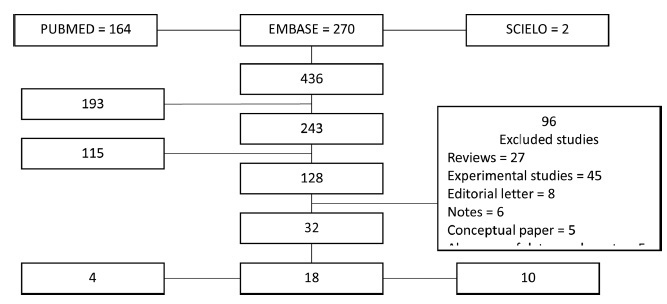
Summary
Revista Brasileira de Ginecologia e Obstetrícia. 2020;42(9):569-576
To performa comprehensive review to provide practical recommendations regarding the diagnosis and treatment of benign adnexal masses, as well as information for appropriate consent, regarding possible loss of the ovarian reserve.
A comprehensive review of the literature was performed to identify the most relevant data about this subject.
In total, 48 studies addressed the necessary aspects of the review, and we described their epidemiology, diagnoses, treatment options with detailed techniques, and perspectives regarding future fertility.
Adnexal masses are extremely common. The application of diagnosis algorithms is mandatory to exclude malignancy. A great number of cases can bemanaged with surveillance. Surgery, when necessary, should be performed with adequate techniques. However, even in the hands of experienced surgeons, there is a significant decrease in ovarian reserves, especially in cases of endometriomas. There is an evident necessity of studies that focus on the long-term impact on fertility.
